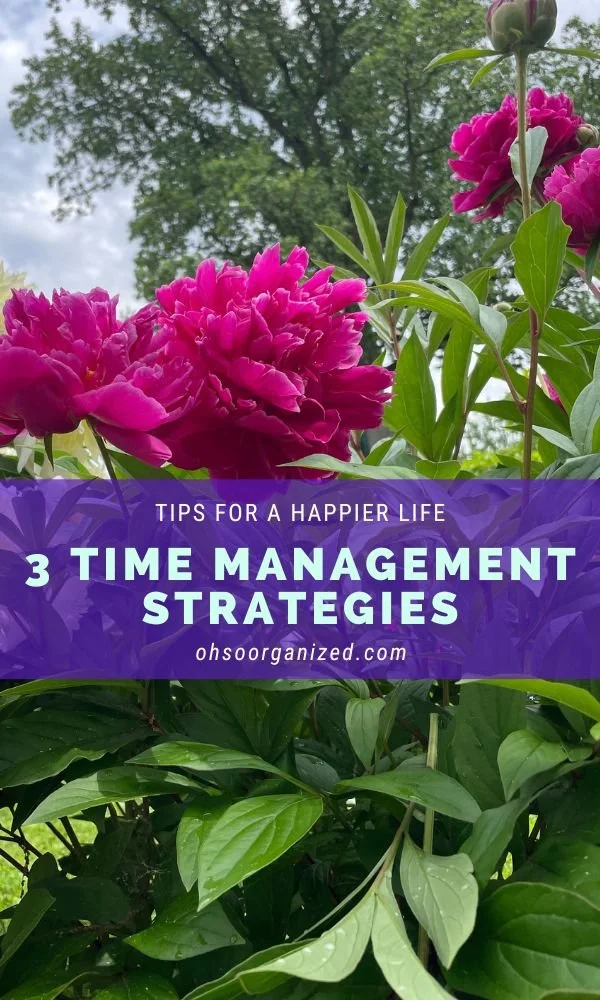When you have a dream or a goal, do you wish it would happen instantly? You want to wave a magic wand, and poof, it’s done. However, most pursuits require time and commitment. A wand won’t get you there.
Patience has become a rare commodity in our fast-paced, always-on, readily accessible world. While you can find the answer to a question in seconds by doing a Google search, most aspects of life require a more substantial time investment.
When you make time to pursue what’s important, you will experience growth, changes, and feelings of satisfaction and joy.
Since time is limited, choosing what’s important to pursue is essential. Understanding and investing the time needed to ‘get there’ will help you focus on your goals. Several things happened recently related to investing time, which I’ll share with you.
5 Ways Prioritizing Your Time Can Lead to Growth and Change
1. Nurturing Time
A few weeks ago, my husband, Steve, and I were gifted three beautiful hydrangea plants. Steve prepared the bed where they would be planted before they could be dug in. It wasn’t easy work, but he did it. Thank you, Honey!
The plants will eventually grow to be about three feet tall. To flourish, they’ll need watering every few days. Each day, I check to see how they’re doing. If they need water, I drag out the hose to hydrate them. Seeing more new growth and bright blueish-purple blooms appear daily makes me happy.
With this investment of physical labor, water, sun, patience, and time, visible growth and change are happening before my eyes. What a gift.
The hydrangea is a literal example of how nurturing something brings growth and change. How can you adapt that idea to other aspects of your life? Time investing is the common denominator, but the nurturing agent will differ.
2. Virtual Organizing Time
I love working with my virtual organizing clients. They are wonderful people who are dedicated to pursuing their goals. It’s exciting to help them facilitate change and witness their growth.
Their changes are often noticeable by the end of their 60—or 90-minute sessions, but they don’t stop there. Growth and change continue weekly, monthly, and beyond. Regular accountability check-ins and tweaks help them stay on track. These shifts show up as changes in perspective, space, or feelings. Confidence and self-esteem improve, obstacles get removed, clutter is released, letting go happens, priorities are focused on, and achieving their goals becomes the norm.
I am so proud of my clients for investing in themselves, prioritizing what’s most important to them, and scheduling the time to pursue their goals one hour, day, and month at a time. Progress is noticeable when you make a time investment.
3. Workshop Time
One of my goals several years ago was to develop and sponsor my own Oh, So Organized! workshops. Creating and presenting was the easy part. Figuring out the technology, back-end stuff, and marketing felt daunting. I invested time and energy to bring this goal to fruition.
Since October 2022, I created, presented, and sponsored five Oh, So Organized! workshops. The most recent one, How to Let That Sh*t Go, was last week. What a great group we had! One section was about letting go of time-related things (distractions and boundaries) that aren’t serving you.
To reach my workshop goal, I had to overcome the fear of doing it wrong. Instead, I leaned on curiosity, experimentation, and my belief in continual learning. Each workshop taught me something new, helped me refine the process, and allowed me to remain open to change.
I’m grateful to the people who helped and encouraged me. While I invested time and resources, I could not have reached this goal alone.
I leaned on a people to . . .
Listen to me, ‘think out loud’
Share valuable insights
Give advice
Answer questions
Provide technical support
Broaden my understanding of options
Troubleshoot
Promote the workshops
Participate in the workshops
Provide feedback
Taking one step at a time, reaching out for help, and being willing to get it wrong led me to this point. Fear is no longer part of the equation. Instead, I’m excited for each new workshop. My next one will be this fall.
“Progress is noticeable when you make a time investment.”
4. Professional Time
NAPO-NY Area Golden Circle Group - Back row (left to right): Karen Caccavo, Linda Samuels, Jocelyn Kenner - Front row (left to right): Susan Kranberg, Brenda Kamen, Andrea Bowser, Klara Carames, Amanda Wiss
In 1999, the then-president of the NAPO-NY chapter asked me if I’d be willing to start a NAPO Golden Circle Group for the New York area. She noticed that the veteran organizers weren’t participating as regularly in the chapter events and meetings. Her sense was that if we created an opportunity for the seasoned organizers to get together, it might reignite their engagement.
As I was already volunteering with NAPO Golden Circle nationally, developing and leading a local group interested me. Guess what? I said, “Yes.” We held our first meeting in April 1999 and continued to grow and lead the group for eight years.
The group has had many leaders since, and it’s still growing. I enjoyed attending the first in-person Golden Circle gathering since pre-pandemic this past weekend. My friend and colleague, Jocelyn Kenner, hosted us at her house. We shared advice, asked questions, ate, laughed, and invested time in each other, our businesses, and our industry. Based on the number of years in business, collectively, we had over 150 years of organizing knowledge and experience. Talk about a time investment!
I wouldn’t have guessed that the volunteer time given and the commitment I made 25 years ago would still be producing fruit. I am grateful for all the leaders and members who have kept this group growing and thriving.
5. Big Goal Time
Then there are those big, audacious goals. Some remain as ideas and dreams, while others manifest. When I was very young, one of my big goals was to have my own business. While I dabbled in many things from an early age, it wasn’t until January 1993 (over thirty years ago) that I launched my organizing company, Oh, So Organized! Without investing my time, money, and sweat equity, I wouldn't be here now.
Recently, I had the joy of being interviewed by the fabulous Janet Barclay about my organizing background, educational journey, and organizing industry growth. Our conversation reaffirmed my belief that big goals can happen. You will reach your big goals using small blocks of time and focusing on your priorities.
What have you noticed about your time investments? What types of goals have you realized? I’d love to hear your thoughts. I invite you to join the conversation.
If you want help organizing your time so you can reach your goals, email me at linda@ohsorganized.com, call 914-271-5673, or schedule a Discovery Call. A life focused on what matters most is possible, especially with support.















